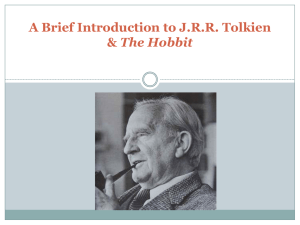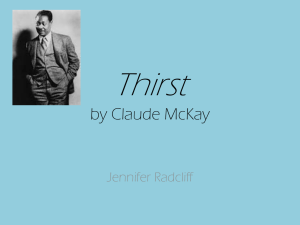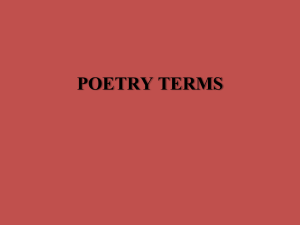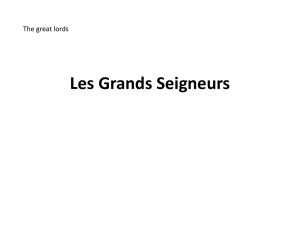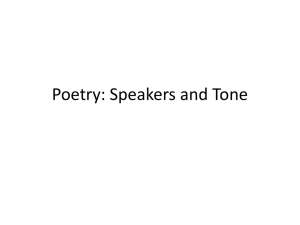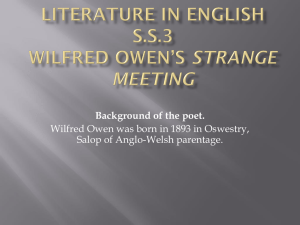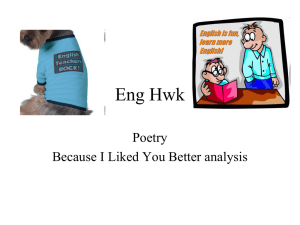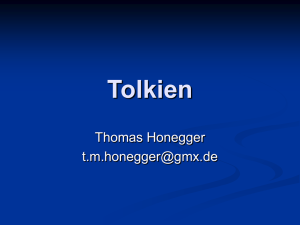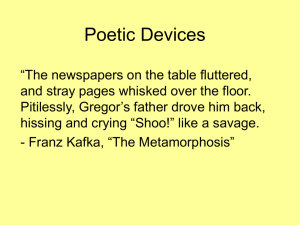ap english iv summer reading test example
advertisement
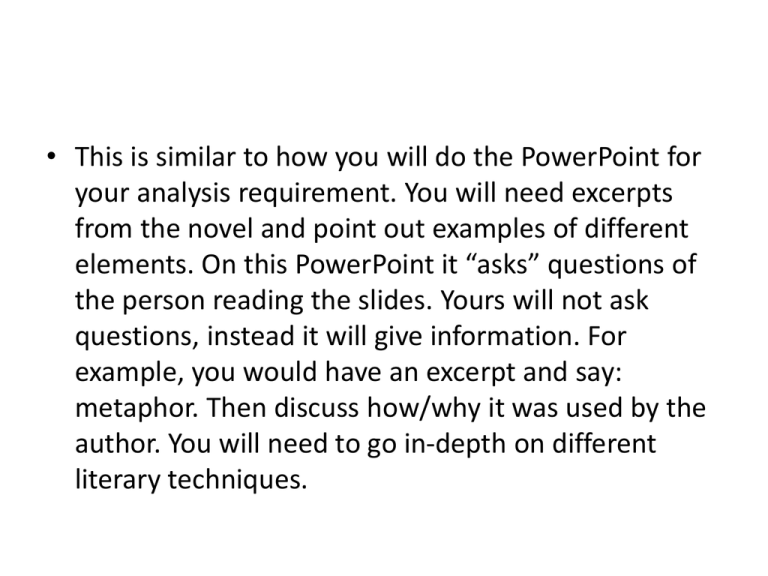
• This is similar to how you will do the PowerPoint for your analysis requirement. You will need excerpts from the novel and point out examples of different elements. On this PowerPoint it “asks” questions of the person reading the slides. Yours will not ask questions, instead it will give information. For example, you would have an excerpt and say: metaphor. Then discuss how/why it was used by the author. You will need to go in-depth on different literary techniques. The Hobbit by J. R. R. Tolkien Background on J. R. R. Tolkien aka John Ronald Reuel Tolkien The name "Tolkien" is understood to be of German origin. Tollkühn: foolishly brave, or stupidly clever; for this reason he occasionally used the fictitious name "Oxymore“. Childhood: He was born on January 3rd, 1892 in Bloemfontein, South Africa When he was 3, Tolkien went to England with his mother and brother on what was intended to be there new home. His father, however, died in South Africa of rheumatic fever before he could join them. When he was 12, Tolkien's mother died. He and his brother lived with aunts and in boarding homes thereafter. Education: •Tolkien's mother strongly encourages education to her children. •When Tolkien was 16 he mastered Latin and Greek language. •When he was 17 he began to create his own languages! •When he was 20, he went to Exeter College, Oxford. Where he studied Classics, Old English, Germanic languages, Welsh, and Finnish. •Tolkien published his very first poem when he was 22, called 'From the many-willow'd margin of the immemorial Thames', in the Stapeldon Magazine of Exeter college. •Tolkien went to Switzerland on a trip, that was his muse for Bilbo’s quest across the Misty Mountains. •Tolkien entered the army in July1915. •While he was in the army he would write letters to his wife. He at this point had his Life: own language in which Edith understood. He could tell her exactly where he was and what he was doing with this secretive translation. •He went home from the army only after 11 months because he got a C. S. Lewis and Tolkien’s friendship •At Oxford Tolkien became a founding member of a group of Oxford friends "The Inklings" who met for conversation, drinks, and readings from their works-in-progress. Another well-known member was C. S. Lewis, who became one of Tolkien's closest friends. •Professionally, they both studied and taught the literatures of medieval romance and, in Tolkien's case, the background of Norse myth. And they realized that it was only quite recently that such stories had become marginalized as "children's stories." Through much of Techniques used by Tolkien: Tolkien’s main style was lyrical prose, which is used to express feelings. Lyric poems have specific rhyming schemes and are often Imagery: •The narrator's highly descriptive style conveys vivid images of Bilbo, his hobbit hole. •Example: In a hole in the ground there lived a Hobbit. Not a nasty, dirty , wet hole , filled with the ends of worms and an oozy smell, nor yet a dry , bare, sandy hole with nothing in it to sit down on or to eat : it was a hobbit hole , and that means comfort •The description emphasize physical details such as color, shape, and size. The details give us in depth symbolism for many things, such as the hobbit hole round door symbolizes an adventure. Rhetorical Questions: •The rhetorical techniques used to convey an oral writing style continues throughout the book, but become less blatant as the story develops. •Example: “what a lot of things you do use good morning for” Simile: A simile is a when two fundamentally unlike things are explicitly compared, usually in a phrase introduced by like or as. Example: pg 126. The wind came down from mountains cold, and like a tide it roared and rolled; Personification: Giving a non living object living characteristics Example: The branches groaned, the forest moaned, and leaves were laid upon the mould. Repetition: repetition of a word or phrase Old fat spider spinning in a tree! Old fat spider cant see me! Old tomnoddy all big body, old tomnoddy cant spy me! Example sing we now softly, and dreams let us weave him! Wind him in slumber and there let us leave him! Influences in history and literature : Most authors can be influenced by many things in their life such as; how they were raised or what major historical events happened during their life. Many authors also gravitate to different types of literature, that each use with their own twist. Historical Influences: •Tolkien based the people of Rohan, the Rohirrim, on the historical Anglo-Saxons (German tribes), giving them Anglo-Saxon names, customs, and poetry. The concept of kingship and monarchical hierarchy is continually alluded to throughout the history of Middle-Earth, the races and the construction of each society. •Lord of The Rings was influenced by Tolkien’s experiences during WWI and his sons during WWII. •Industrialization influenced his writing also. He hated it he believed life should be simple. He rode his bike everywhere he went. Hence the evil dragons name is “Smaug” and smog is a fog made heavier and darker by smoke and chemical fumes Religious Influences: •Tolkien was a very spiritual man, he was catholic. His close friend C. S. Lewis was an agonistic at the time. They frequently debated about religion and mythology. Unlike Lewis, who tended to dismiss myths and fairy tales, Tolkien strongly believed that they have moral and spiritual value. Tolkien said, "The imagined beings have their inside on the outside; they are visible souls. And Man as a whole, Man pitted against the Universe, have we seen him at all till we see that he is like a hero in a fairy tale?" •Tolkien once described Lord of The Rings to a friend as a fundamentally religious and catholic work. Showing good versus evil, humility over pride, and the activity of grace, as seen with Frodo's pity to Gollum. •Non-Christian religious themes also had strong influences in Tolkien's Middle-earth. Literature Influences: •Tolkien used Old English as a basic foundation for his book. His muse was a heroic epic called Beowulf. He based lord of the rings off of this Anglo-Saxan poem. Beowulf is now considered one of the most important pieces of Old English literature. Tolkien's Symbol: The symbol that Tolkien used in lord of the ring represents his initials J. R. R. T. . The symbol also contains the One Ring, the tree of Valinor, and the stars of the House of Fëanor. LO: To complete some close analysis using the SPIRIT template. SC: 1) I will be able to explain what the poem is about. 2) I can articulate what view the speaker has. 3) I can analyse some key poetic techniques. Christina Georgina Rossetti (5 December 1830 – 29 December 1894) was an English poet who wrote a variety of romantic, devotional, and children's poems. Many scholars have identified feminist themes in her poetry. She was opposed to slavery, cruelty to animals and the exploitation of girls in under-age prostitution LO: To complete some close analysis using the SPIRIT template. SC: 1) I will be able to explain what the poem is about. 2) I can articulate what view the speaker has. 3) I can analyse some key poetic techniques. Poetic Devices 1) From what perspective is the poem told? What does this tell us about the power that the speaker has if she is nameless? Structure 4) What does the repetition of the question mark tell us about the narrator? Poetic Devices 2) “Cottage maiden” is juxtaposed with “great lord,” why? I was a cottage maiden Hardened by sun and air Contented with my cottage mates, Not mindful I was fair. Why did a great lord find me out, And praise my flaxen hair? Why did a great lord find me out, To fill my heart with care? Imagery 3) Look at “contented” and “not mindful”. Is the language active or passive? What does this tell us about the power held by women in Victorian England? LO: To complete some close analysis using the SPIRIT template. SC: 1) I will be able to explain what the poem is about. 2) I can articulate what view the speaker has. 3) I can analyse some key poetic techniques. Imagery Poetic Devices 1) What does the word “lured” tell us about the lord? 3) Why has the poet used the oxymoron “shameless shameful life” to describe the narrator? Imagery 2) Annotate the 2 similes in this stanza. What do they tell us about the lord? He lured me to his palace home Woe's me for joy thereofTo lead a shameless shameful life, His plaything and his love. He wore me like a silken knot, He changed me like a glove; So now I moan, an unclean thing, Who might have been a dove. Imagery 4) What is “unclean thing” a reference to? LO: To complete some close analysis using the SPIRIT template. SC: 1) I will be able to explain what the poem is about. 2) I can articulate what view the speaker has. 3) I can analyse some key poetic techniques. Imagery 4) This poem is full of contrasts – label two in this stanza and explain why the poet uses so many. Imagery 1)How would you describe the language in this stanza (and the rest of the poem)? Simple, complex? How many syllables do lots of the words contain? What effect is created by the language? O Lady Kate, my cousin Kate, You grew more fair than I: He saw you at your father's gate, Chose you, and cast me by. He watched your steps along the lane, Your work among the rye; He lifted you from mean estate To sit with him on high. Imagery 2) How do the underlined phrases make the lord sound? A B A B C B A B Rhyme 3) Label the rhyme scheme in this stanza. Is it regular or irregular in the poem? What effect does this create? LO: To complete some close analysis using the SPIRIT template. Poetic Devices 1) Why is the underlined phrase repeated? What does it highlight about the narrator’s feelings? SC: 1) I will be able to explain what the poem is about. 2) I can articulate what view the speaker has. 3) I can analyse some key poetic techniques. Because you were so good and pure He bound you with his ring: The neighbors call you good and pure, Call me an outcast thing. Even so I sit and howl in dust, You sit in gold and sing: Now which of us has tenderer heart? You had the stronger wing Imagery 2) a) In contrast, what do “the neighbours” call the narrator? b) What connotations do these two words contain? c) What does this tell us about Victorian attitudes to love and marriage? Imagery 3) “howl in dust” is an example of vivid imagery; annotate the two words on your poem. We will discuss connotations afterwards. Ideas 4) What themes and ideas does Rossetti convey in this poem? LO: To complete some close analysis using the SPIRIT template. SC: 1) I will be able to explain what the poem is about. 2) I can articulate what view the speaker has. 3) I can analyse some key poetic techniques. Tone / Voice 1) Who is the narrator addressing for much of the poem? How would you describe her tone of voice? O cousin Kate, my love was true, Your love was writ in sand: If he had fooled not me but you, If you stood where I stand, He'd not have won me with his love Nor bought me with his land; I would have spit into his face And not have taken his hand. NOTE: The lord in this poem is not reproached for the way he behaves, whilst the narrator is. Imagery 2) This is a vivid image. What does it tell you about the way the narrator feels? Poetic Devices 3) What tense is the underlined quotation written in? What does this tell you about the power available to women in Victorian society? LO: To complete some close analysis using the SPIRIT template. SC: 1) I will be able to explain what the poem is about. 2) I can articulate what view the speaker has. 3) I can analyse some key poetic techniques. Imagery 1) What is “gift” a metaphor for? Tone / Voice 2) This stanza symbolises a shift in tone and mood for the narrator – how is this reflected in the line “I’ve little doubt you fret”? Yet I've a gift you have not got, And seem not like to get: For all your clothes and wedding-ring I've little doubt you fret. My fair-haired son, my shame, my pride, Cling closer, closer yet: Your father would give his lands for one To wear his coronet Poetic Devices 3) What does the alliteration tell us about the speaker? LO: To complete some close analysis using the SPIRIT template. Area of analysis Structure Poetic devices Imagery Rhythm/rhyme Ideas Tone/voice SC: 1) I will be able to explain what the poem is about. 2) I can articulate what view the speaker has. 3) I can analyse some key poetic techniques. Techniques within this area Layout, stanza shape, punctuation Repetition, personification, onomatopoeia, alliteration, assonance, any non-standard English Similes, metaphors, language choice. Rhyme scheme, rhythm, assonance, alliteration Themes and messages. The character of the persona (the person speaking in the poem, NOT the poet) Overall tone or mood and how this is conveyed. You now have 10 minutes to do the following: 1. Use 1 piece of A4 lined paper and create a SPIRIT grid. 2. Put the letter in the margin 3. Add notes what of you have observed about the poem to each column Tips! Use your annotations from your anthology to help you. Don’t write in full paragraphs – the point is to get quick, important notes down By the end of this term you will be able to do this in 5 minutes! LO: To complete some close SC: 1) I will be able to explain what the poem is about. 2) I can articulate analysis using the SPIRIT template. what view the speaker has. 3) I can analyse some key poetic techniques. Revision homework for next lesson: compose a three paragraph answer to the question below, Bring in typed or written up, ready to be added to your anthology. This lesson with be on www.fairfieldenglish.org Grade How does Rossetti use contrasts and juxtaposition to express the narrator’s views? B/A C - Explain the significance of the poetic features and the effect it has on the reader. - Consider how the effect links to the theme of the poem. - Consider historical/literary context and significance. - Consider alternative explanations. - Explain how the quotations link to the theme you have identified. - Identify a poetic feature and how this supports your point. D Find two quotations that support your observation. E Describe the content of the poem and identify the key theme. Structure Poetic Devices Imagery Rhythm /Rhyme Ideas Tone

